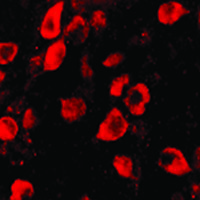miR-132 regulates the expression of synaptic proteins in APP/PS1 transgenic mice through C1q

Submitted: 1 January 2019
Accepted: 1 April 2019
Published: 3 May 2019
Accepted: 1 April 2019
Abstract Views: 2238
PDF: 976
HTML: 6
HTML: 6
Publisher's note
All claims expressed in this article are solely those of the authors and do not necessarily represent those of their affiliated organizations, or those of the publisher, the editors and the reviewers. Any product that may be evaluated in this article or claim that may be made by its manufacturer is not guaranteed or endorsed by the publisher.
All claims expressed in this article are solely those of the authors and do not necessarily represent those of their affiliated organizations, or those of the publisher, the editors and the reviewers. Any product that may be evaluated in this article or claim that may be made by its manufacturer is not guaranteed or endorsed by the publisher.
Similar Articles
- Dailun Hu, Philip K. Nicholls, Melissa Claus, Yongkang Wu, Zhongli Shi, Wayne K. Greene, Bin Ma, Immunofluorescence characterization of innervation and nerve-immune cell interactions in mouse lymph nodes , European Journal of Histochemistry: Vol. 63 No. 4 (2019)
- Toru Inomata, Yoko Miwa, Shinichi Kawata, Takuya Omotehara, Iwao Sato, Masahiro Itoh, Immunohistochemical study for relationship between vessel and lymphatic properties and tooth marks in human oral mucosa , European Journal of Histochemistry: Vol. 64 No. 1 (2020)
- J. Zhang, J. Luo, J. Ni, L. Tang, H.P. Zhang, L. Zhang, J.F. Xu, D. Zheng, MMP-7 is upregulated by COX-2 and promotes proliferation and invasion of lung adenocarcinoma cells , European Journal of Histochemistry: Vol. 58 No. 1 (2014)
- G. Chene, N. Radosevic-Robin, A.S. Tardieu, A. Cayre, I. Raoelfils, P. Dechelotte, J. Dauplat, F. Penault Llorca, Morphological and immunohistochemical study of ovarian and tubal dysplasia associated with tamoxifen , European Journal of Histochemistry: Vol. 58 No. 2 (2014)
- W. Theunissen, D. Fanni, S. Nemolato, E. Di Felice, T. Cabras, C. Gerosa, P. Van Eyken, I. Messana, M. Castagnola, G. Faa, Thymosin beta 4 and thymosin beta 10 expression in hepatocellular carcinoma , European Journal of Histochemistry: Vol. 58 No. 1 (2014)
- A.K. Lindström, D. Hellberg, Immunohistochemical LRIG3 expression in cervical intraepithelial neoplasia and invasive squamous cell cervical cancer: association with expression of tumor markers, hormones, high-risk HPV-infection, smoking and patient outcome , European Journal of Histochemistry: Vol. 58 No. 2 (2014)
- Liyuan Yang, Chunfu Du, Hui Chen, Zhengwen Diao, Downregulation of Williams syndrome transcription factor (WSTF) suppresses glioblastoma cell growth and invasion by inhibiting PI3K/AKT signal pathway , European Journal of Histochemistry: Vol. 65 No. 4 (2021)
- Y. Zhang, W.Y. Ye, J.Q. Wang, S.J. Wang, P. Ji, G.Y. Zhou, G.P. Zhao, H.L. Ge, Y. Wang, dCTP pyrophosphohydrase exhibits nucleic accumulation in multiple carcinomas , European Journal of Histochemistry: Vol. 57 No. 3 (2013)
- H. Xu, X. Zhang, H. Wang, Y. Zhang, Y. Shi, X. Zhang, Continuous cyclic mechanical tension increases ank expression in endplate chondrocytes through the TGF-β1 and p38 pathway , European Journal of Histochemistry: Vol. 57 No. 3 (2013)
- Jacopo J.V. Branca, Donatello Carrino, Ferdinando Paternostro, Massimo Gulisano, Matteo Becatti, Lorenzo Di Cesare Mannelli, Alessandra Pacini, Antioxidant support to ameliorate the oxaliplatin-dependent microglial alteration: morphological and molecular study , European Journal of Histochemistry: Vol. 65 No. s1 (2021): Special Collection on Advances in Neuromorphology in Health and Disease
<< < 32 33 34 35 36 37 38 > >>
You may also start an advanced similarity search for this article.

 https://doi.org/10.4081/ejh.2019.3008
https://doi.org/10.4081/ejh.2019.3008










